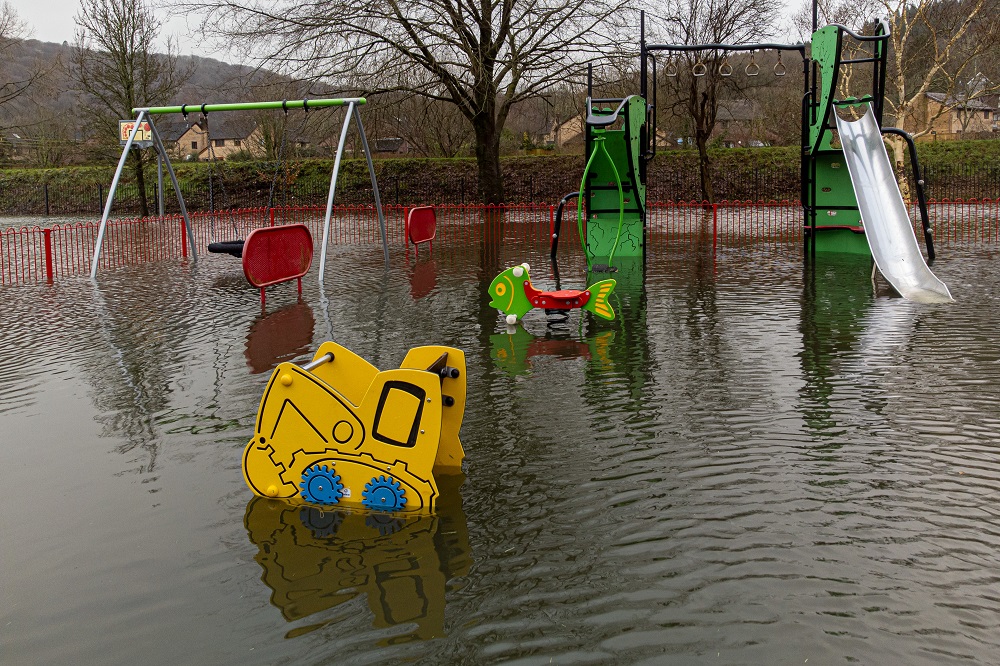Council set to move to new flood response system

Anthony Lewis Local Democracy Reporter
A Welsh council is set to move to a flood response system that does not just rely on Met Office warnings.
As part of recommendations approved by Rhondda Cynon Taf Council’s cabinet on Wednesday, April 9, the council will move away from the current “yellow, amber and red” with a new standby protocol that does not just rely on Met Office warnings but also uses other data such as flood forecasting models and the predicted rainfall forecasts.
The cabinet report said that following Storm Bert, the leader of the council requested a review of Met Office and NRW (Natural Resources Wales) warning systems and their effectiveness when applied to localised weather events.
The report said that the Met Office and NRW are undertaking these reviews and making changes – accepting that their warnings and timings of warnings were not as required
And the council is also set to provide flood equipment to more than 150 homes through one of the recommendations agreed as part of its review into the response to Storm Bert in November.
Major incident
Storm Bert brought over 170mm of rainfall in parts of RCT, with lower lying areas receiving between 50-100mm more widely.
A major incident was declared by the council and there was internal flooding to approximately 438 homes and businesses, as well as extensive flooding of infrastructure including rail and highway networks, town centres, business parks and leisure facilities.
The cabinet report highlighted the council’s preparedness for Storm Bert with 265 projects having been completed since Storm Dennis, more than £23m spent benefiting 2,728 properties and a “flood response protocol” now in place.
It also laid out the actions of the council during the storm and actions after the storm including clean up and infrastructure cleansing, inspections, flood investigations, business support, financial support and infrastructure damage repair
Now extra measures have been agreed to mitigate flood risk in RCT.
Recommendations
The first recommendation is around internal trigger levels for extreme weather and a standby protocol.
A review by the council has decided that there is a need for a RCT specific mechanism using a variety of data sources that decides the internal response levels and does not solely rely only on Met Office warnings but uses other data such as flood forecasting models and the predicted rainfall forecasts.
It is also proposed to increase standby resources aligned to revised trigger levels which includes a revised warning system based on internal intelligence that assesses the risk outside of official warning categories.
The next recommendation relates to scour and debris mitigation. The council will increase resources and strategically place and deploy machinery and equipment to respond and cleanse the systems where possible to maintain water flow.
Ongoing infrastructure improvements will maximise the potential for debris control, the report added.
There is a recommendation that relates to gully cleaning. An additional gully cleansing vehicle is to be brought in and deployed for six months annually to increase gully cleansing throughout the summer period leading into winter.
Another recommendation focuses on drainage resources. It will involve the introduction of two temporary extra external drainage gangs for six months, in addition to the existing four internal drainage gangs to assist with increased workload post surveys and inspections.
The pluvial drainage team and depot organisation are to be reviewed and restructured including looking into the opportunity for “mini” stores for specialist equipment such as sandbags.
The next recommendation is that, even though NRW are the risk management authority for main rivers, the council is rolling out additional interim property flood resistance equipment to over 150 properties.
This is in line with the council’s permissive powers to help residents with temporary resilience measures pending the outcome of an NRW review of river flooding and these measures will likely include expandable flood barriers and air vent covers.
There is also a culvert cameras and telemetry recommendation. This will involve the further enhancement and roll out of culvert and flood risk management infrastructure with CCTV monitoring and telemetry to increase real time information and improve monitoring and response, linked to the control room and monitored 24/7.
There is a recommendation around rain gauges. It involves increased data capture with extra rain gauges which will enable storms and impact to be tracked in real time as they move across the county borough.
And there is a recommendation included around enhanced collaboration. This involves further integration and collaboration with partner agencies in preparation for and in response to incidents, with greater sharing of information to enhance the response and planning.
The report said the recommendations are the result of the latest review and “their implementation will ensure that we continue to effectively protect and support our residents, businesses and communities through future weather related incidents.”
The estimated cost of the recommendations is £740,000 and these costs can be met from existing resources already included within capital and revenue budget, the report said.
Support our Nation today
For the price of a cup of coffee a month you can help us create an independent, not-for-profit, national news service for the people of Wales, by the people of Wales.




